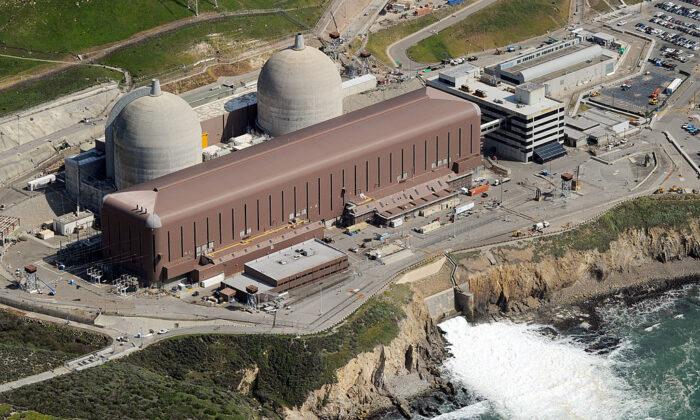In two recent decisions, state and federal energy regulators have approved a plan by Pacific Gas and Electric to continue running California’s last working nuclear power plant beyond 2025—which will boost energy supplies for the state as it transitions to renewable energy.
The federal Nuclear Regulatory Commission elected to review PG&E’s license renewal application Dec. 19, allowing the utility to continue operating Diablo Canyon’s two remaining reactors, which would have expired in 2024 and 2025.
If granted, the renewal would authorize the plant to continue operating for up to 20 years, according to PG&E.
Additionally, the California Public Utilities Commission voted to allow the nuclear plant to continue operating until 2030. The extension gives the state extra time to fully transition to renewable energy sources, officials said.
The Diablo Canyon Power Plant employs about 1,300 in San Luis Obispo County, situated between San Francisco and Los Angeles on California’s Central Coast.
The plant provides about 17 percent of California’s zero-carbon electricity supply and about 9 percent of the state’s electricity.
The past week’s regulatory decisions angered some environmental groups and, in an opposite sentiment, spurred reaction from at least one congressman who said he was in favor of keeping the plant open longer.
The plant’s extension was opposed by several environmental groups that claimed keeping it operating could cost up to $45 billion and prolong the risk of failure at the aging plant.
“This ill-conceived decision will further escalate financial strain on California ratepayers and extend the threat of a catastrophe at Diablo Canyon,” said Ken Cook, president of the Environmental Working Group and a Bay Area resident, said in a statement Dec. 14.
Fearing political backlash last year over the threat of another summer of rolling blackouts, Gov. Gavin Newsom signed Senate Bill 846 into law, which allowed PG&E to continue operations beyond 2025.
California’s extreme summer temperatures and wildfires have strained the state’s power grid in the past few years, causing rolling blackouts and government pleas to conserve energy.
Fearing more electricity shortages as green-energy infrastructure lagged, state lawmakers approved a plan in 2022 to temporarily allow the Diablo Canyon plant to continue operating until 2030, pending regulatory approvals. They also agreed to spend $1.4 billion to keep the plant running.







